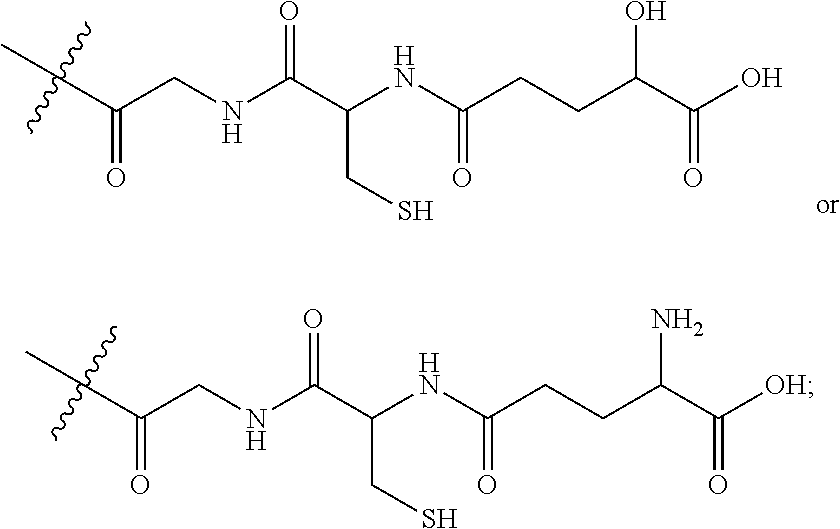Agents that prevent or repair skin damage
a technology of skin damage and agents, applied in the direction of anti-noxious agents, drug compositions, dermatological disorders, etc., can solve the problem of increasing the risk of non-melanoma skin cancer
- Summary
- Abstract
- Description
- Claims
- Application Information
AI Technical Summary
Benefits of technology
Problems solved by technology
Method used
Image
Examples
example 1
Preparation of Compounds 3a, 3b, 3c and 3d
[0197]
[0198]To a solution of 1,3-dibromopropane (2.202 g, 10.07 mmol) in 50 mL of anhydrous DMF was added O,O′-Bis(trimethylsilyl)-thymine (2) (6.256 g, 23.17 mmol). The solution was heated to 170° C. and stirred overnight. The reaction was cooled to 0° C. and 10 mL of water was added to the reaction mass to precipitate the product. The precipitated mass was stirred for 15 min at 0° C. The solids were filtered off, washed with 100 mL of chloroform-methanol (1:1) and dried under vacuum to give compound 3a (2.351 g, 81%) as an off white solid. 1H NMR (600 MHz, DMSO-d6): δ 11.20 (s, 2H), 7.51 (s, 2H), 3.71 (t, 4H, J=7.04 Hz), 1.91 (t, 4H, J=7.04 Hz), 1.73 (s, 6H); 13C NMR (150 MHz, DMSO-d6): δ 164.72, 151.36, 141.68, 108.98, 45.27, 28.31, 12.37; Mass (ESI-MS): 293.154 (M+H); m.p: 330-334° C.; Compounds 3b, 3c and were prepared following the procedure described for compound 3a. 3b: 1H NMR (600 MHz, DMSO-d6): δ 11.18 (s, 2H), 7.50 (s, 2H), 3.62 (...
example 2
Preparation of Compound 8
[0199]
[0200]To a solution of thymine (1) in THF was added pyridine and the reaction was cooled to 0° C. Benzoyl chloride was added carefully at 0° C. and the reaction was stirred overnight at room temperature. The reaction mass was evaporated to give the crude solid which was purified by SiO2 flash chromatography to give the N3-benzoyl thymine (4) as a white solid. NMR (600 MHz, CD3OD): δ 7.94 (m, 2H), 7.71 (t, 1H, J=7.3 Hz), 7.57 (m, 2H), 7.38 (s, 1H), 1.90 (s, 3H); Mass (ESI-MS): 231.22 (M+H); m.p: 178-180° C.
[0201]To a solution of N3-benzoyl thymine in THF was added PPh3 and DIAD and the reaction was cooled to at 0° C. Compound 5 in THF was added to the reaction mass drop-wise and the reaction was slowly brought to room temperature. Stirring was continued overnight. The organic solvents were evaporated to give the dark brown residue which was purified by SiO2 flash chromatography to give the NBz-bisthymine compound 6. 1H NMR (600 MHz, DMSO-d6): δ 7.91 (m,...
example 3
Preparation of Compound 9
[0204]
[0205]To a solution of thymine 1 (5.01 g, 39.76 mmol) in anhydrous DMSO (135 mL) was added 1-bromopropane (1.601 g, 13.01 mmol) and anhydrous potassium carbonate (5.50 g, 39.28 mmol) and the resulting suspension was stirred for 10-12 h at room temperature. The solids were filtered off and the filtrate was evaporated under reduced pressure at 50° C. leaving a colorless semisolid which was suspended 500 mL water and extracted with chloroform (3×125 mL). The organic layer was dried over anhydrous Na2SO4, filtered and evaporated to give the light yellow solid which was recrystallized using absolute ethanol to give white crystalline solid 9a (0.875 g, 40.13% based on 1-bromopraopane). 1H NMR (600 MHz, DMSO-d6): δ 11.19 (s, 1H), 7.5 (s, 1H), 3.59 (t, 2H, J=7.04 Hz), 1.72 (s, 3H), 1.59 (app. sext, 2H), 0.82 (t, 3H, J=7.63 Hz); 13C NMR (150 MHz, DMSO-d6): δ 164.72, 151.32, 141.93, 108.72, 49.09, 22.16, 12.34, 11.09; Mass (ESI-MS): 169.191 (M+H); m.p: 133-135° ...
PUM
| Property | Measurement | Unit |
|---|---|---|
| temperature | aaaaa | aaaaa |
| temperature | aaaaa | aaaaa |
| mass | aaaaa | aaaaa |
Abstract
Description
Claims
Application Information
 Login to View More
Login to View More - R&D
- Intellectual Property
- Life Sciences
- Materials
- Tech Scout
- Unparalleled Data Quality
- Higher Quality Content
- 60% Fewer Hallucinations
Browse by: Latest US Patents, China's latest patents, Technical Efficacy Thesaurus, Application Domain, Technology Topic, Popular Technical Reports.
© 2025 PatSnap. All rights reserved.Legal|Privacy policy|Modern Slavery Act Transparency Statement|Sitemap|About US| Contact US: help@patsnap.com



